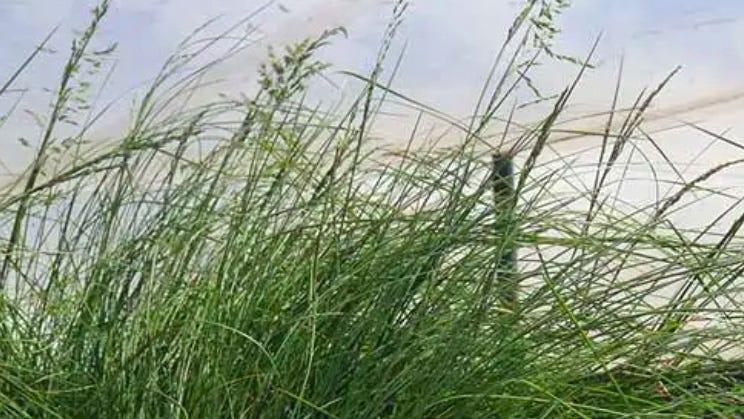There are some gardeners reading this who will probably think that I am just lazy. Plant a native garden I thought — little maintenance required. Our landscape gardener agreed and added mass plantings of the native grass, Poa labillardierei, otherwise known as tussock grass, to our front garden. Ten years on I have regrets.
The delicate flowering plumes that extend above the blades of grass look wonderful swaying in a summer breeze … for a minute. Turn your back however and its seeds have scattered, germinated nearby and new clumps of poa have sprung up.
The original poa grass plantings have spread and taken over many of the other native plants in our garden. The tall clumps of the grass are crowded with both new green and dead brown stalks, forming masses so wide it’s impossible to pull them out. Slashing them with the brushcutter, as my husband occasionally has the urge to do, leaves an unattractive green and brown buzz-cut mound, with sturdy new greenies soon thrusting rapidly upward and upward to gaily release their seeds far and wide again come late summer.
This morning I was on my hands and knees going for it trying to pull out any small new clumps of poa I could spot. My hands didn’t feel strong enough. I tugged and tugged and groaned but also had the occasional small victory where I released a small clump and fell backward with a thud into the dry stubbly earth. I’m too old for this caper but I did hoot with delight when I released one particularly stubborn clump.
I reflected on the way the dead and the living coexist in the poa grass in my garden. Dead poa are not forgotten here. Maybe it’s okay if I just leave them to be together. Is this the lesson my garden of native plants is teaching me?
This short post resulted from an exercise I did in Joy & the Sorrow: A 12-Week Intensive for Writing the World. It is based on the essayette ‘Blindweed…Delight?’ in The Book of Delights by Ross Gay.




